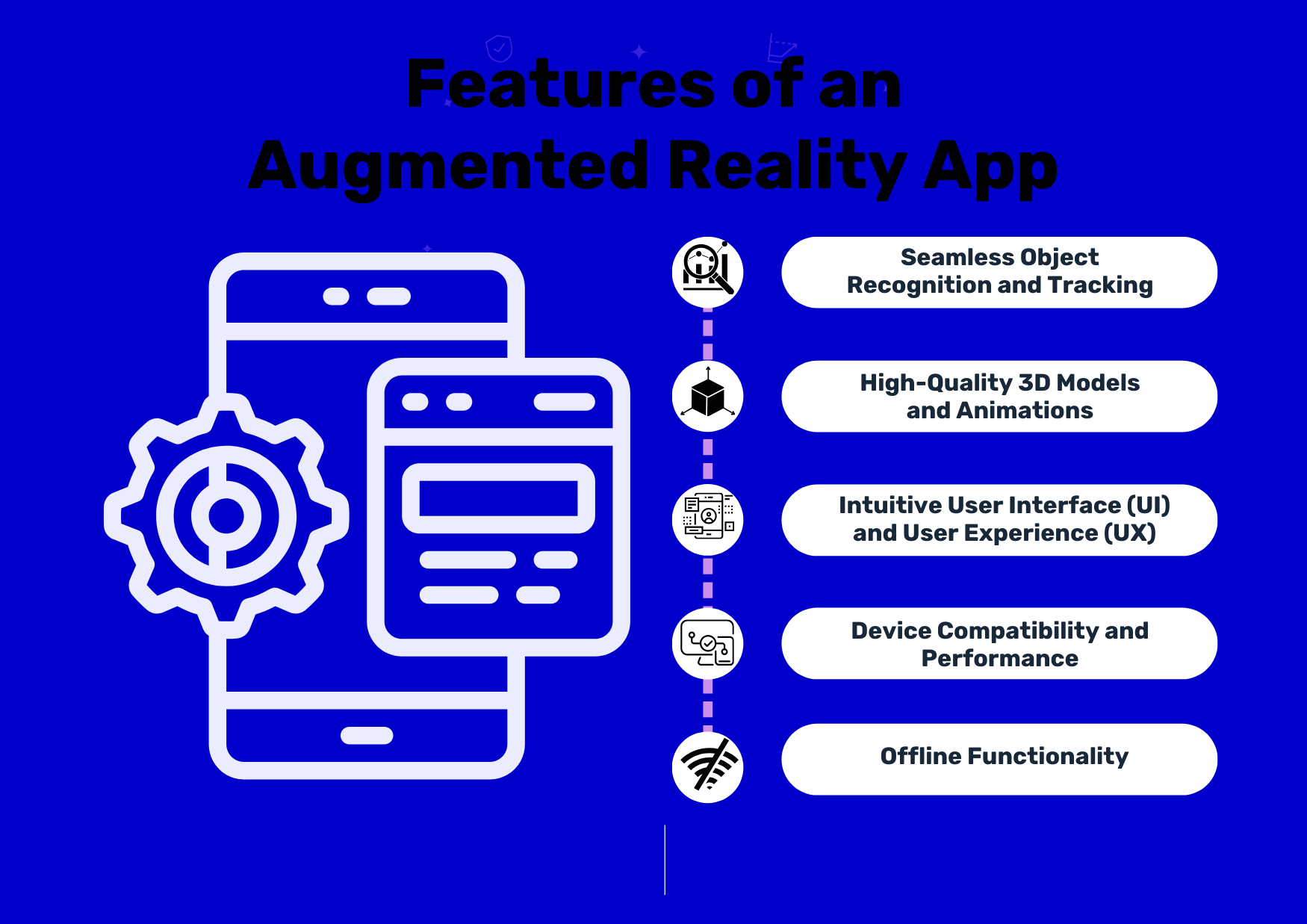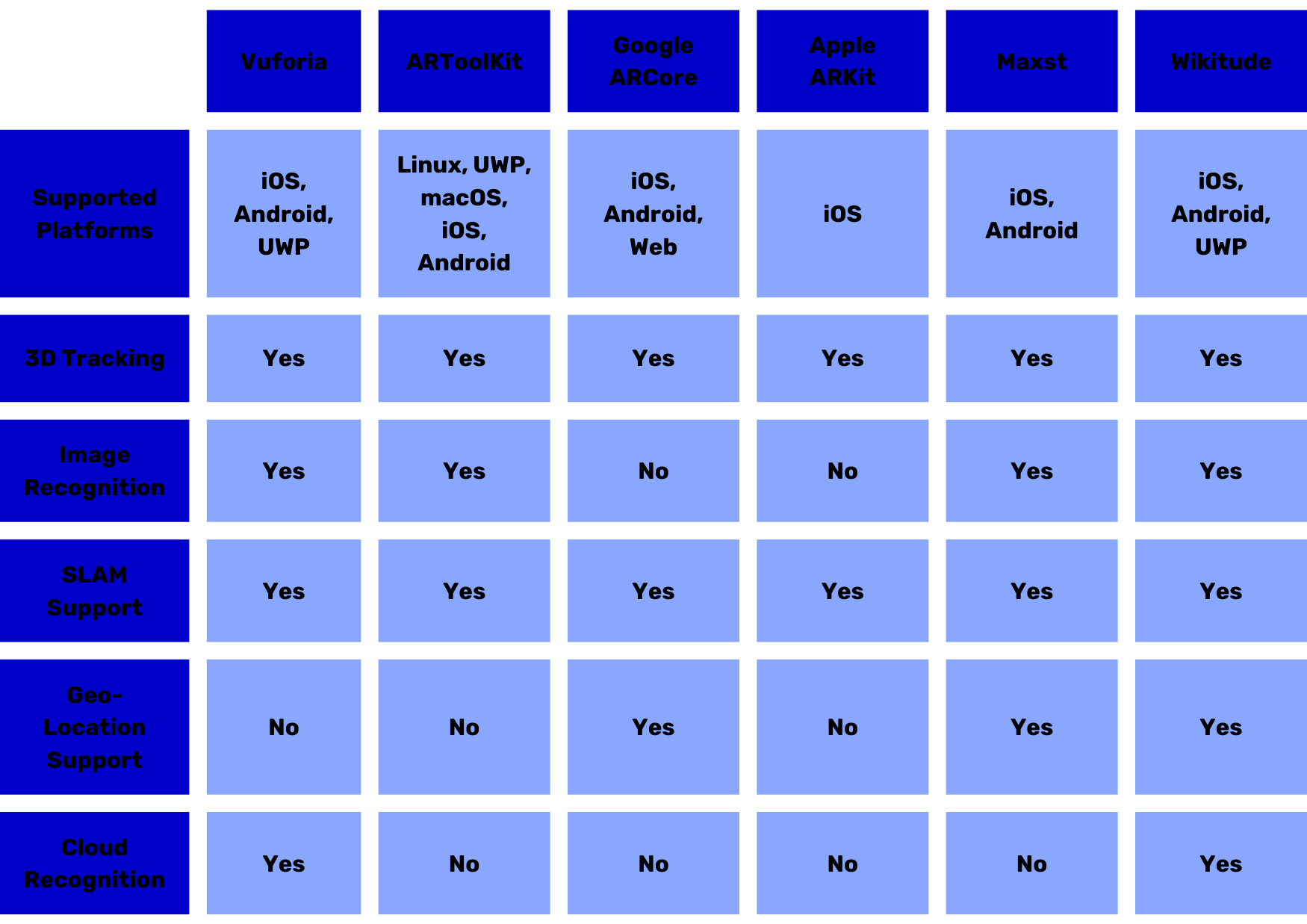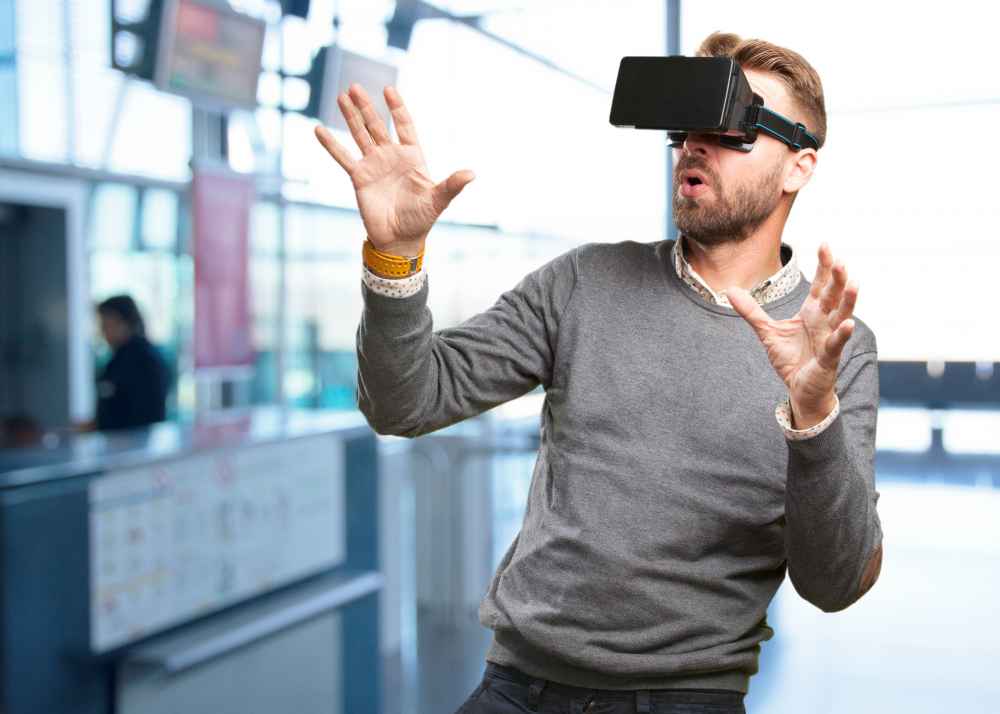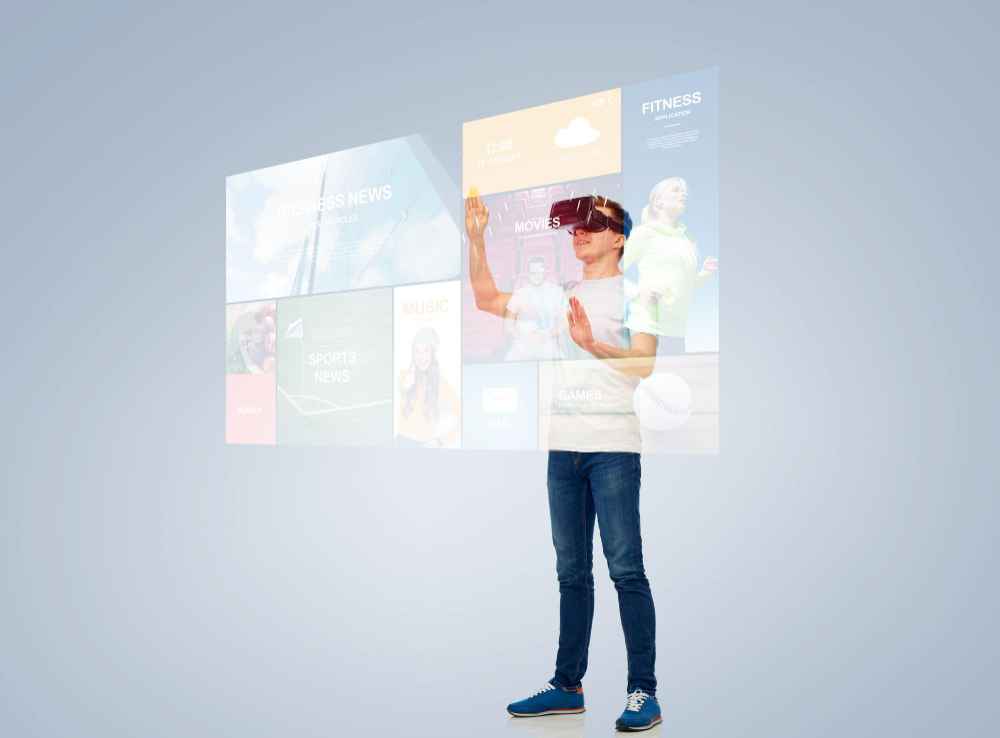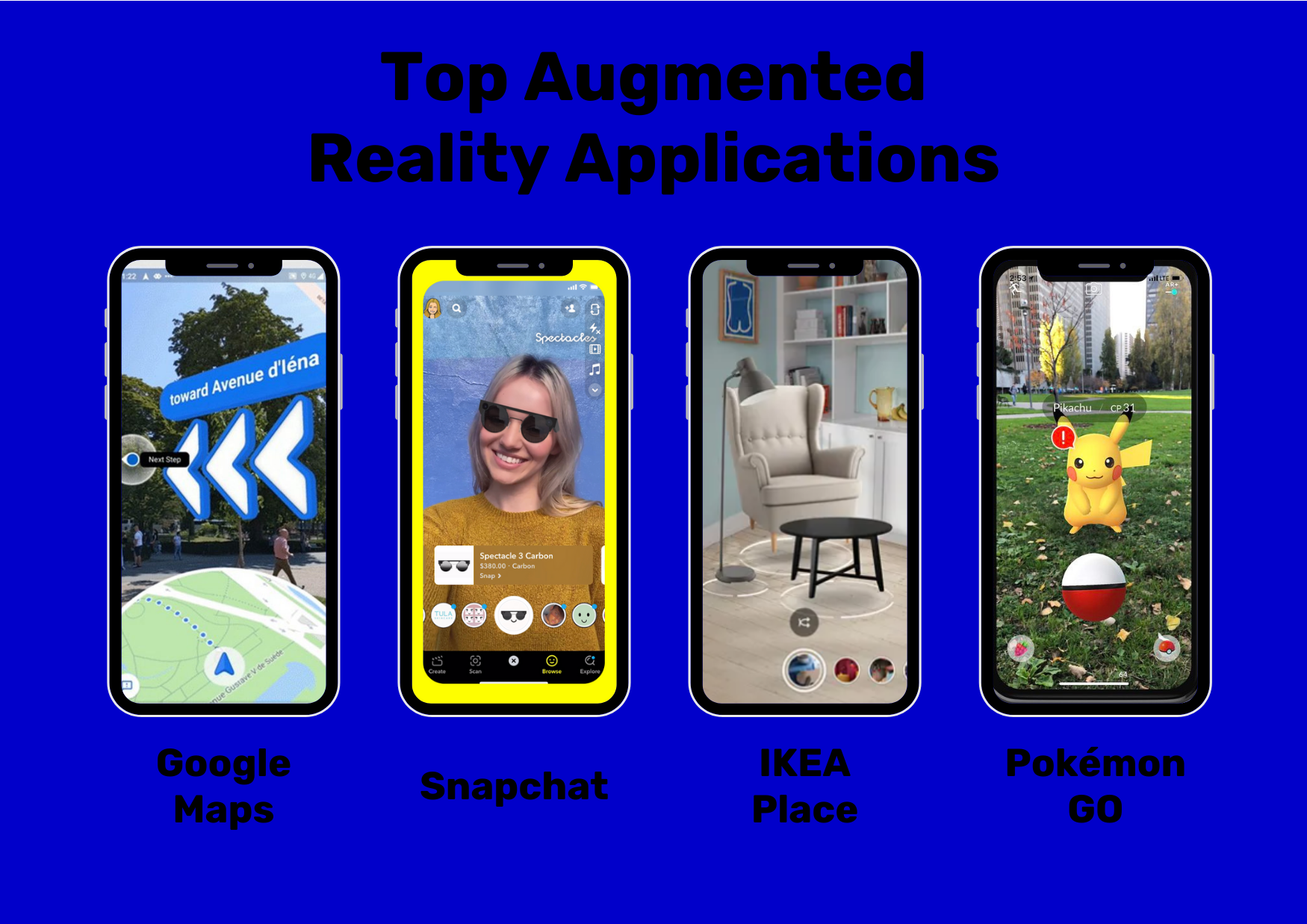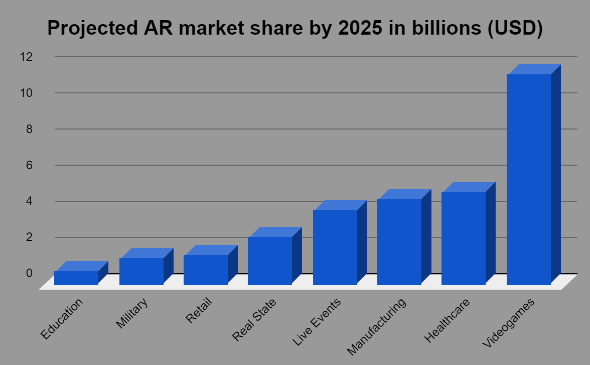Augmented Reality App Development Guide 2024 - Step by Step

The world is becoming increasingly layered with digital experiences. Augmented reality (AR) is at the forefront of this trend, seamlessly blending the physical and virtual worlds. A recent study by Statista revealed that the global mobile AR market revenue is expected to increase to 30.77 billion US dollars. This has fueled significant growth in the augmented reality app development market. Major companies like Ikea, Sephora, and Nike are incorporating AR to enhance customer engagement. But what exactly is an AR app?
An AR app overlays digital elements on top of the real world, viewed through a smartphone or tablet camera. This creates interactive experiences that can transform how we shop, learn, and interact with the world around us. This blog post serves as your one-stop guide to AR app development in 2024. By the end of this guide, you’ll be equipped with the knowledge to build a successful AR app, and you will be on your way to partnering with an AR VR services company to bring your vision to life.
Augmented Reality App Development – Detailed Guide:
Augmented reality is an exciting field that unlocks a world of creative possibilities but how do you develop augmented reality apps? In this detailed guide, we will break down the key steps involved in augmented reality app development, introduce you to essential tools and technologies, and offer valuable insights to help you craft an engaging and successful AR experience.
Focus on a Niche and Project Requirements:
The foundation of any successful AR app lies in a clearly defined purpose. Start by identifying a specific problem your AR app can solve, whether it’s enhancing product visualisation in e-commerce or providing interactive educational experiences. Conduct thorough market research to ensure your concept offers a unique value proposition. The AR app development process can vary depending on the chosen approach. There are two main categories:
- Marker-based AR: Relies on pre-defined triggers like QR codes or images to activate AR experiences.
- Markerless AR: Leverages real-world environments and SLAM (Simultaneous Localization and Mapping) technology to position virtual elements.
Understanding these distinctions is crucial for crafting the right technical strategy for your AR app. By focusing on a niche and its specific requirements, you can develop an AR app that stands out and delivers a truly impactful user experience.
Craft a Compelling Business Plan:
A well-defined business plan is the roadmap to success for any augmented reality application development project. This plan should outline your target audience, the specific problem your AR app solves, and the unique value proposition it offers. Additionally, detail your chosen revenue model, whether through in-app purchases, subscriptions, or advertising partnerships.
Estimating development costs is crucial for securing funding and ensuring financial viability. Also look into personnel costs, software licences, and potential hardware needs. By creating a comprehensive business plan, you can attract investors, secure resources, and navigate the complexities of augmented reality development.
Choose a Development Approach:
The landscape of augmented reality app development offers various approaches to consider. Here’s a breakdown of the main options:
- Native Development: Building separate apps for iOS (Swift) and Android (Java/Kotlin) provides the best performance and access to device-specific features. However, it requires maintaining two codebases, increasing development time and cost.
- Cross-Platform Development: Frameworks like Unity (C#) and React Native (JavaScript) allow you to create a single codebase that works on both iOS and Android. This streamlines development, but may result in performance limitations compared to native apps.
- Hybrid Development: This approach combines native app features with web technologies like HTML5 and JavaScript. While offering some flexibility, it might not be ideal for complex AR experiences due to potential performance drawbacks.
- Web AR: Emerging web-based AR solutions leverage browser capabilities for AR experiences. This allows for easy access without app downloads, but functionality might be limited compared to native apps.
The choice of programming language goes hand-in-hand with your development approach. It is also important to take into consideration factors like developer expertise, desired features, and target platforms. Moreover besides the core tools, stay updated on the future of augmented reality. Keep an eye on advancements in areas like cloud-based rendering, and advanced hand tracking. These technologies are set to push the boundaries of what’s possible in augmented reality mobile app development, creating even more immersive and interactive experiences.
Select a Type of an AR Application:
The AR tech market offers a variety of application types, each catering to specific use cases. These include Marker-based augmented reality, Location-based augmented reality, Projection augmented reality and Superimposition-based augmented reality. By understanding these different AR application types and their functionalities, AR development solutions providers can adjust AR experiences to meet the specific needs of their clients and target audiences. Here’s a breakdown of some popular options:
- Marker-based Augmented Reality: Marker-based AR utilises pre-defined triggers like QR codes or images to activate digital overlays. This approach is ideal for product visualisation, marketing campaigns, and educational experiences. Imagine scanning a QR code on a toy package to trigger an interactive 3D animation that demonstrates how to assemble the toy.
- Location-based Augmented Reality: Location-based AR leverages GPS technology to deliver AR experiences based on a user’s physical location. This is commonly used in gaming, navigation apps, and location-based marketing campaigns. A treasure hunt AR game uses GPS to guide players to hidden virtual objects around their city.
- Projection-based Augmented Reality: Projection-based AR employs projectors to create interactive light displays on surfaces. This approach is often used for interactive retail experiences, entertainment installations, and educational exhibits. Suppose a clothing store utilises projection-based AR to allow customers to virtually try on clothes without physically changing outfits.
- Superimposition-based Augmented Reality: Superimposition-based AR overlays digital elements directly onto a user’s view of the real world through a smartphone or tablet camera. This is a versatile approach used in various applications, including education, maintenance, and entertainment. Imagine an AR app for mechanics superimposes virtual assembly instructions onto a real-world machine, guiding them through the repair process.
List Down the Feature:
When it comes to augmented reality app development, focusing on the right features is crucial for creating an engaging and successful user experience. Here are five must-have features to consider:
- Seamless Object Recognition and Tracking: Ensure smooth and accurate interaction between the physical world and virtual elements.
- High-Quality 3D Models and Animations: Immerse users with visually appealing and realistic 3D content.
- Intuitive User Interface (UI) and User Experience (UX): Prioritise user-friendliness and clear interactions for a natural and enjoyable experience.
- Device Compatibility and Performance: Optimise your AR app for a range of devices while maintaining smooth performance and responsiveness.
- Offline Functionality: Consider enabling core features to function without an internet connection, enhancing accessibility and user convenience.
By incorporating these key features, you can create an AR app that stands out and delivers a truly valuable experience for your users. Moreover, consulting with experienced augmented reality app development services can guide you through the process and ensure your AR app achieves its full potential.
Choose a SDK for your Application:
An SDK – Software Development Kit is a pre-built set of tools and resources that answers how to make an AR app by providing the building blocks for AR functionality. Choosing the right SDK depends on several factors:
- Supported Platforms: Does the SDK work on your target platforms (iOS, Android, or both)?
- Features and Functionality: Does it offer features like 3D tracking, cloud recognition, image recognition, or SLAM (Simultaneous Localization and Mapping) support, crucial for your AR concept?
- Geolocation Support: Is location-based AR functionality important for your app?
- Smart Glasses Support: Will your AR experience extend to smart glasses or other wearable devices?
- Documentation and Support: Does the SDK provider offer clear documentation and reliable support resources?
- Pricing: Does the pricing model fit your project budget?
By carefully considering your project requirements and the functionalities offered by each option, you can select the ideal tool to bring your AR vision to life. Now, let’s delve into some popular AR SDK options:
Vuforia:
A powerful and versatile SDK from PTC, offering cross-platform development, robust features like 3D tracking and cloud recognition, and even smart glasses support.
ARToolKit:
An open-source option ideal for basic AR experiences and learning the fundamentals of AR development. However, it may lack advanced features like SLAM support.
Google ARCore:
This is Google’s native AR SDK for Android development, offering exceptional performance, image recognition, and tight integration with Google services.
Apple ARKit:
This is Apple’s native AR SDK for iOS development, providing a user-friendly framework, excellent image recognition, and advanced features like LiDAR support on newer iPhones.
Maxst:
Maxsr is a comprehensive SDK with a focus on enterprise-grade solutions and real-time object recognition, including features like SLAM and cloud recognition.
Wikitude:
A well-established SDK offering cross-platform development, a variety of features for location-based AR experiences, and even basic image recognition capabilities.
Finding an App Development Expert:
Finding the right app development partner is key to a successful AR application. Look for experienced teams with a strong portfolio in AR development and a proven track record of creating engaging and innovative AR experiences. Elite IT Team stands out as a leader in the AR development space, offering a collaborative approach and the expertise to bring your unique AR vision to reality.
Work on Designs of User Interface:
In augmented reality app development, a well-designed user interface (UI) is essential for creating a seamless and enjoyable user experience. This goes hand-in-hand with strong user experience (UX) design principles. By prioritising clear information hierarchy, intuitive interactions, and an uncluttered overlay on the real world, AR software development teams can ensure your AR app is both functional and engaging.
Onboard Skilled Team Members:
The AR App Development Process requires a skilled team to translate your vision into reality. Onboard a team with expertise in areas like 3D modelling, AR development tools, and UI/UX design. Effective communication and collaboration are crucial for utilising the business benefits of emerging technology like AR. By fostering a collaborative environment, you can ensure your AR app reaches its full potential.
Test Your AR App:
Just like any app, testing is essential after the development of your AR app.. This involves playtesting the AR app on various devices under different lighting conditions. The goal is to see if it runs smoothly on different devices and offers a clear and enjoyable experience for users. By identifying and addressing any bugs or glitches, you can refine your AR app for the optimum user experience.
Effective Marketing:
Once your augmented reality application development is complete, it’s time to get the word out! Develop a strategic marketing plan to reach your target audience. Utilise social media platforms to showcase your AR app’s capabilities and generate excitement. Consider creating engaging demo videos or partnering with relevant influencers to spread awareness and drive downloads of your innovative AR creation.
Release AR Application:
The final stage of your augmented reality app development journey arrives with the exciting launch day! Submit your app to the appropriate app stores (Google Play Store or Apple App Store) following their specific guidelines. Ensure clear and concise app descriptions with captivating visuals that effectively capture user attention and highlight the unique value proposition of your AR experience. Celebrate this achievement and prepare to witness the impact of your innovative AR creation on the world!
What are the applications of AR in different fields?
Augmented reality is rapidly transforming various industries, creating innovative solutions and enhancing user experiences. For example, the potential of Augmented Reality in marketing includes showcasing furniture virtually placed within a customer’s home (Ikea) or trying on makeup shades before purchase (Sephora). Here’s a glimpse into how AR is potentially making waves:
Retail:
Augmented Reality is changing the retail shopping experience, allowing customers to interact with products in a more immersive way. Augmented reality in ecommerce allows users to see how clothes would look on them or how furniture would fit in their space, reducing returns and boosting customer satisfaction. For example, Sephora’s Virtual Artist app lets users virtually try on makeup before buying.
Education:
AR breathes life into learning by bringing textbooks and classrooms to life. Students can explore 3D models of historical landmarks or dissect virtual frogs, fostering a deeper understanding of complex concepts.
Manufacturing and Maintenance:
AR simplifies complex tasks by overlaying critical information onto machinery or equipment. Technicians can view assembly instructions or identify malfunctioning parts, streamlining the maintenance process. For example, Boeing uses AR to help workers assemble complex aeroplane wiring systems.
Travel and Tourism:
AR can enhance travel experiences by providing interactive information about landmarks, historical sites, or even restaurant menus. Imagine holding your phone up to a famous building and seeing its history come alive in an AR overlay!
Popular Augmented Reality apps in 2024:
The world of Augmented Reality app development is full of exciting applications! Here are some of the top augmented reality apps in 2024 that showcase the potential of AR development:
Google Maps:
Getting lost is a thing of the past! AR walking navigation with Google Maps shows you clear directions overlaid on your phone’s camera, guiding you right where you need to go.
Snapchat:
This social media favourite remains a leader in AR fun. Play with playful filters, explore interactive lenses, and even discover location-based AR games to keep you entertained and connected with friends.
IKEA Place:
No more wondering if that couch will fit in your living room! IKEA Place uses AR to let you virtually place furniture models in your home using your smartphone camera. This innovative augmented reality app development success story helps you visualise furniture size and style before you buy, making shopping for furniture a breeze.
Pokémon GO:
Gotta catch ’em all! This wildly popular game keeps players on the move by blending the beloved world of Pokémon with real-world exploration through AR. Explore your surroundings, catch virtual Pokémon, and battle other trainers, all while getting some exercise and enjoying the fresh air.
Google Lens:
Your phone can be a powerful tool! Google Lens uses image recognition and AR to give you real-time information about the world around you. Simply point your camera at an object and Google Lens can translate text, identify landmarks, or even recommend products, all through the magic of AR.
AR Market Size and Statistics:
The Augmented Reality (AR) market is experiencing explosive growth. According to Statista, a leading provider of market and consumer data, the global AR market size is valued at over USD 31.97 billion and is projected to reach a staggering USD 50 billion by 2027. This represents a Compound Annual Growth Rate (CAGR) of 31.5% and the AR tech market is expected to grow at an annual rate of 8.97%. Moreover, the User Penetration Rate for AR is projected to be 52.8% in 2024 and is expected to reach 56.5% by 2029.
These figures highlight the immense potential of AR technology and the increasing adoption across various industries. The growth is fueled by several factors, including rising smartphone penetration, advancements in AR hardware and software development, and growing investments in the AR space. As AR technology continues to mature and become more accessible, we can expect the market size to continue its upward trajectory in the coming years.
Final Words:
The world of augmented reality is packed with exciting possibilities. This guide has answered the question is it hard to make an AR app by exploring the key considerations for augmented reality app development, from identifying a niche and crafting a business plan to selecting the right AR/VR development tools and launch strategies. We’ve also highlighted the immense potential of AR across various industries, showcasing how it can transform everything from shopping experiences to education and travel.
However, it’s important to acknowledge the pros and cons of Augmented Reality. While AR offers undeniable benefits, considerations like privacy concerns and potential social implications require thoughtful attention. Ultimately, responsible development practices are crucial for ensuring AR technology enhances our lives in a positive and meaningful way.
Table of Contents
Frequently Asked Questions:
The time to develop an AR app depends on complexity. Simple apps can take a few months, while complex ones might take a year or more. It depends on features, design, and the development team’s experience.
The cost of an AR app varies based on complexity. Simple apps can range from $10,000 to $30,000, while feature-rich ones can reach $100,000 or more. It is important to consider factors like development time, team size, and needed features when budgeting for your AR project.
AR apps use various algorithms! Some focus on image recognition to identify real-world objects, while others use SLAM (Simultaneous Localization and Mapping) to understand a device’s location and position in the real world. This allows virtual elements to be placed accurately.

Zara Finch
Zara, an experienced professional in the SEO industry for the past two years, is passionate about discussing technology, innovations, and the ever-evolving digital landscape. With a keen interest in exploring the latest trends and developments, she brings valuable insights and expertise to her work.





